You are using an out of date browser. It may not display this or other websites correctly.
You should upgrade or use an alternative browser.
You should upgrade or use an alternative browser.
Mast Cell - Histamine (Immunotherapy With Histamine)
- Thread starter Bayard T. Horton
- Start date
Issie
Well-Known Member
Yes on most of your questions. I'm low histamine and low lectin. Also don't eat nightshades or grains very often. Try to keep foods as anti-inflammatory as possible.
I do occasionally use DAO, but not always. I'm trying to get my receptors to work by using a histamine cream and a few other herbs and supplements that tweak histamine receptors. (I do have a children Allegra and GastroCrom, as an Emergency backup, if I don't get my timing right on getting on top of a degranulation. But the cream used at first signs of an issue will usually stop it.)
I am doing things for acetaldehyde. Dejurgen and I are in the process of experimenting with supplements. We both want to see benefit before we talk of what we are using. And we plan to write about our findings. Neither of us are drinkers, so this is NOT from that. But a dysfunction that can have other issues including problems with methylation and ammonia. Dejurgen just wrote a long post on a recent blog. I'll will link it later.
I do occasionally use DAO, but not always. I'm trying to get my receptors to work by using a histamine cream and a few other herbs and supplements that tweak histamine receptors. (I do have a children Allegra and GastroCrom, as an Emergency backup, if I don't get my timing right on getting on top of a degranulation. But the cream used at first signs of an issue will usually stop it.)
I am doing things for acetaldehyde. Dejurgen and I are in the process of experimenting with supplements. We both want to see benefit before we talk of what we are using. And we plan to write about our findings. Neither of us are drinkers, so this is NOT from that. But a dysfunction that can have other issues including problems with methylation and ammonia. Dejurgen just wrote a long post on a recent blog. I'll will link it later.
Issie
Well-Known Member
Here is the blog with Dejurgen post on hypoxia and ammonia.
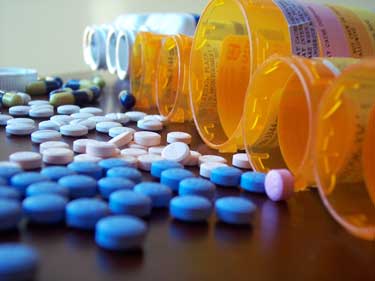
And I talked a good bit about MCAS on this latest blog. There are a few interesting links there.


Why We Sleep Pt II: Walker on the Dark Side of Sleeping Pills - Plus a CBT That Works? - Health Rising
Mathew Walker PhD, the author of Why We Sleep reports that sleeping pills do not provide natural sleep, have many possible side effects and even can increase one's risk of death. He recommends sleep hygiene and cognitive behavioral therapy for insomnia.
www.healthrising.org
And I talked a good bit about MCAS on this latest blog. There are a few interesting links there.

Seizing the Moment: International ME/CFS COVID-19 Research Effort Begins - Health Rising
“I have sympathy for people with chronic fatigue syndrome now, and I believe this disease fast-tracks you into experiencing these symptoms.” Paul Garner – Infectious Diseases Specialist A lot of infections can trigger chronic fatigue syndrome (ME/CFS) but in some ways SARS-CoV-2 is different in...
www.healthrising.org
Issie
Well-Known Member
I didn't know this medicine. So looked it up. Appears it would have a similar response as it ups histamine and dopamine, according to this article.

 en.m.wikipedia.org
en.m.wikipedia.org
As of 2017, the therapeutic mechanism of action of modafinil for narcolepsy and sleep-wake disorders remains unknown.[35][36] Modafinil acts as an atypical, selective, and weak dopamine reuptake inhibitor which indirectly activates the release of orexin neuropeptides and histamine from the lateral hypothalamus and tuberomammillary nucleus, respectively all of which may contribute to heightened arousal.[35][36][37]
Dopamine transporter blocker Edit
Research found that modafinil elevates histamine levels in the hypothalamus in animals.[38] The locus of the monoamine action of modafinil was also the target of studies, with effects identified on dopamine in the striatum and, in particular, nucleus accumbens,[39][40] norepinephrine in the hypothalamus and ventrolateral preoptic nucleus,[41][42] and serotonin in the amygdala and frontal cortex.[43]
____________
An interesting recent finding of mine is that dopamine from D2R is what activates histamine especially in the brain. And carnosine helps up this histamine at the H3R, in the brain. AND, It also helps take down acetaldehyde. Which Dejurgen and I are researching and feel there is a strong connection with.
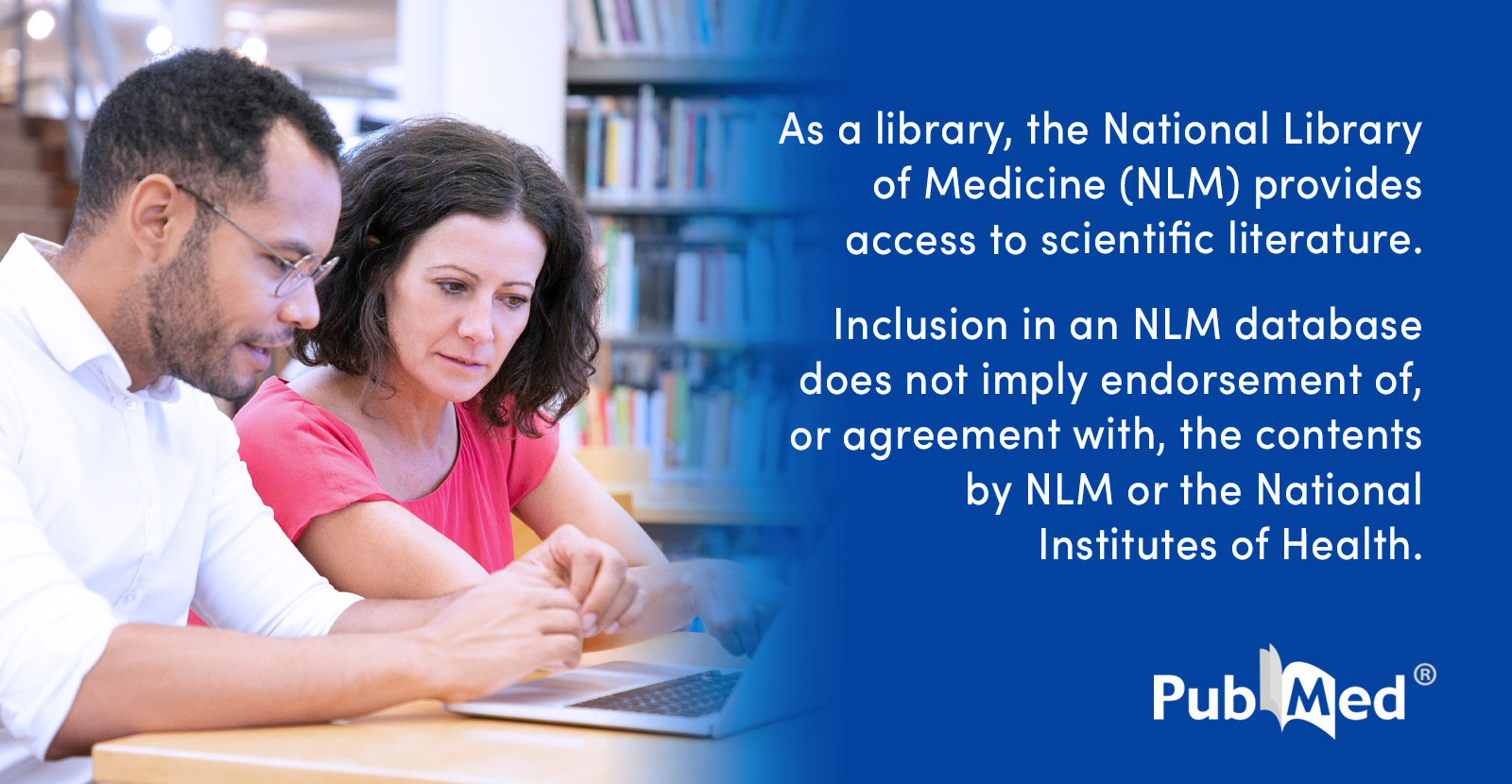
 pubmed.ncbi.nlm.nih.gov
pubmed.ncbi.nlm.nih.gov
It can be concluded that histamine stimulates serotonin, norepinephrine, and dopamine transmission in the brain. Modulation of firing of dopamine neurons is a key element in functional interactions between histamine and other monoamines.
 www.ncbi.nlm.nih.gov
www.ncbi.nlm.nih.gov
Tuning down GABA receptors. The H3R and D2 receptors wake you up and create dopamine. The D1 receptor creates GABA which is complete opposite effect and will make you sleepy.
So dopamine is turned on in the brain by the histamine receptor.
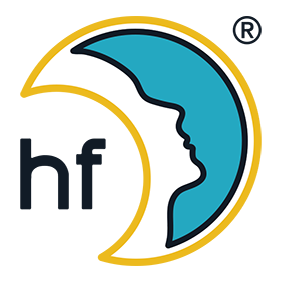
 www.hypersomniafoundation.org
www.hypersomniafoundation.org
Histamine used for narcolepsy
 jpet.aspetjournals.org
jpet.aspetjournals.org
essential for the dopamine receptor-mediated signaling. In conclusion, these findings demonstrate that H3R is an important regulator of sensorimotor gating and the lack of H3R significantly modifies striatal dopaminergic signaling. These data support the usefulness of H3R ligands in neuropsychiatric disorders with pre-attentional deficits and disturbances in dopaminergic signaling.
****I havent read all of this one, but some good info here.*******
Talks about methylation and indicates issues with DAO and HNMT, both if which genetically I have too low function of. And that has to do with MCAS issues.

Modafinil - Wikipedia
As of 2017, the therapeutic mechanism of action of modafinil for narcolepsy and sleep-wake disorders remains unknown.[35][36] Modafinil acts as an atypical, selective, and weak dopamine reuptake inhibitor which indirectly activates the release of orexin neuropeptides and histamine from the lateral hypothalamus and tuberomammillary nucleus, respectively all of which may contribute to heightened arousal.[35][36][37]
Dopamine transporter blocker Edit
Research found that modafinil elevates histamine levels in the hypothalamus in animals.[38] The locus of the monoamine action of modafinil was also the target of studies, with effects identified on dopamine in the striatum and, in particular, nucleus accumbens,[39][40] norepinephrine in the hypothalamus and ventrolateral preoptic nucleus,[41][42] and serotonin in the amygdala and frontal cortex.[43]
____________
An interesting recent finding of mine is that dopamine from D2R is what activates histamine especially in the brain. And carnosine helps up this histamine at the H3R, in the brain. AND, It also helps take down acetaldehyde. Which Dejurgen and I are researching and feel there is a strong connection with.

Interaction Between Brain Histamine and Serotonin, Norepinephrine, and Dopamine Systems: In Vivo Microdialysis and Electrophysiology Study - PubMed
Brain monoamines (serotonin, norepinephrine, dopamine, and histamine) play an important role in emotions, cognition, and pathophysiology and treatment of mental disorders. The interactions between serotonin, norepinephrine, and dopamine were studied in numerous works; however, histamine system...
It can be concluded that histamine stimulates serotonin, norepinephrine, and dopamine transmission in the brain. Modulation of firing of dopamine neurons is a key element in functional interactions between histamine and other monoamines.
Histamine H3 receptors, the complex interaction with dopamine and its implications for addiction - PMC
Histamine H3 receptors are best known as presynaptic receptors inhibiting the release of histamine, as well as other neurotransmitters including acetylcholine and dopamine. However, in the dorsal and ventral striatum, the vast majority of H3 ...
Tuning down GABA receptors. The H3R and D2 receptors wake you up and create dopamine. The D1 receptor creates GABA which is complete opposite effect and will make you sleepy.
So dopamine is turned on in the brain by the histamine receptor.

GABA and Histamine Work Together to Control Wakefulness - Hypersomnia Foundation
New research on genetically altered mice helps to untangle the complex interactions of GABA with brain systems necessary for sustaining wakefulness.
Histamine used for narcolepsy
Histamine H3 receptor regulates sensorimotor gating and dopaminergic signaling in the striatum
The brain histamine system has been implicated in regulation of sensorimotor gating deficits and in Gilles de la Tourette syndrome (GTS). Histamine also regulates alcohol reward and consumption via H3 receptor (H3R), possibly through an interaction with the brain dopaminergic system. Here we...
essential for the dopamine receptor-mediated signaling. In conclusion, these findings demonstrate that H3R is an important regulator of sensorimotor gating and the lack of H3R significantly modifies striatal dopaminergic signaling. These data support the usefulness of H3R ligands in neuropsychiatric disorders with pre-attentional deficits and disturbances in dopaminergic signaling.
****I havent read all of this one, but some good info here.*******
Talks about methylation and indicates issues with DAO and HNMT, both if which genetically I have too low function of. And that has to do with MCAS issues.
Last edited:
Histamine seems to interact with so many body processes. While I do not understand this topic in depth like Issie does, I learned enough from her to not just blindly suppress its workings with daily doses of antihistamines. I would be eligible for them as I have hay fever.
When having symptoms, I learned to just top of the biggest excess (and endure the symptoms when they are somewhat tolerable). Many symptoms seem comparable with fever in this regard: fever is a mechanism to help you heal by killing pathogens through heat. Suppressing fever with medication in sort suppresses the healing mechanism. So, even if fever is no fun I try to not do so unless the fever gets too high and dangerous.
The same applies for many other things in health: I try to suppress (rather then cure the underlying cause for them) the excessive part of symptoms only. When it comes to histamine, I can't get easily my hands on the histamine cream she uses and getting the application right is still a work in progress even for Issie. But stinging nettles tea also contains some histamine and has many other health effects. Don't use nettle parts with seeds however as those can give bad effects.
Adding extra histamine can sound contradictory for a condition known as too much histamine, but I tend to see it as trying to level things from getting too low or too high. Think about nightly hypoglycemia resulting in rebound morning hyperglycemia. When taking a few slow and lightly digesting carbs before going to sleep, I sleep better. As an addition, I help prevent nightly hypoglycemia reducing the chance of my body to get at mornings into hyperglycemia. Both the shortage and the excess cause health trouble. So increasing it when low can help reduce both excesses and with it the associated health cost.
While it's an absolute oversimplification when thinking about the effect of histamine, I think it points to not drinking nettles tea when having a meal high in histamine but outside meals stabilizing histamine levels. Note that as said I do not understand this subject as well as Issie does.
When having symptoms, I learned to just top of the biggest excess (and endure the symptoms when they are somewhat tolerable). Many symptoms seem comparable with fever in this regard: fever is a mechanism to help you heal by killing pathogens through heat. Suppressing fever with medication in sort suppresses the healing mechanism. So, even if fever is no fun I try to not do so unless the fever gets too high and dangerous.
The same applies for many other things in health: I try to suppress (rather then cure the underlying cause for them) the excessive part of symptoms only. When it comes to histamine, I can't get easily my hands on the histamine cream she uses and getting the application right is still a work in progress even for Issie. But stinging nettles tea also contains some histamine and has many other health effects. Don't use nettle parts with seeds however as those can give bad effects.
Adding extra histamine can sound contradictory for a condition known as too much histamine, but I tend to see it as trying to level things from getting too low or too high. Think about nightly hypoglycemia resulting in rebound morning hyperglycemia. When taking a few slow and lightly digesting carbs before going to sleep, I sleep better. As an addition, I help prevent nightly hypoglycemia reducing the chance of my body to get at mornings into hyperglycemia. Both the shortage and the excess cause health trouble. So increasing it when low can help reduce both excesses and with it the associated health cost.
While it's an absolute oversimplification when thinking about the effect of histamine, I think it points to not drinking nettles tea when having a meal high in histamine but outside meals stabilizing histamine levels. Note that as said I do not understand this subject as well as Issie does.
Issie
Well-Known Member
Serum histidine is lower in fatigued women with multiple sclerosis.
 www.ncbi.nlm.nih.gov
www.ncbi.nlm.nih.gov
I think, histidine and histidine-derived peptides such as carnosine have many beneficial functions:
Histidine in Health and Disease: Metabolism, Physiological Importance, and Use as a Supplement.
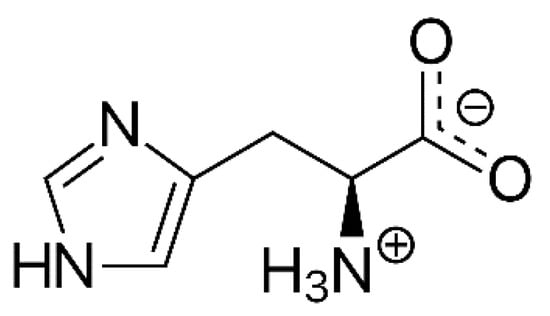
 www.mdpi.com
Physiology and Pathophysiology of Carnosine.
www.mdpi.com
Physiology and Pathophysiology of Carnosine.
2-Oxo-histidine–containing dipeptides are functional oxidation products.
Serum Histidine is Lower in Fatigued Women with Multiple Sclerosis - PMC
Disabling persistent perceived fatigue occurs in 50% of people with multiple sclerosis (MS), but mechanisms are poorly understood. Low histidine could contribute to fatigue since it is the neurotransmitter histamine precursor and low serum levels ...
I think, histidine and histidine-derived peptides such as carnosine have many beneficial functions:
Histidine in Health and Disease: Metabolism, Physiological Importance, and Use as a Supplement.

Histidine in Health and Disease: Metabolism, Physiological Importance, and Use as a Supplement
L-histidine (HIS) is an essential amino acid with unique roles in proton buffering, metal ion chelation, scavenging of reactive oxygen and nitrogen species, erythropoiesis, and the histaminergic system. Several HIS-rich proteins (e.g., haemoproteins, HIS-rich glycoproteins, histatins, HIS-rich...
2-Oxo-histidine–containing dipeptides are functional oxidation products.
Issie
Well-Known Member
Histamine is recognized as a neurotransmitter or neuromodulator in the brain, and it plays a major role in the pathogenic progression after cerebral ischemia. Extracellular histamine increases gradually after ischemia, and this may come from histaminergic neurons or mast cells. Histamine alleviates neuronal damage and infarct volume, and it promotes recovery of neurological function after ischemia; the H1, H2, and H3 receptors are all involved. Further studies suggest that histamine alleviates excitotoxicity, suppresses the release of glutamate and dopamine, and inhibits inflammation and glial scar formation. Histamine may also affect cerebral blood flow by targeting to vascular smooth muscle cells, and promote neurogenesis. Moreover, endogenous histamine is an essential mediator in the cerebral ischemic tolerance. Due to its multiple actions, affecting neurons, glia, vascular cells, and inflammatory cells, histamine is likely to be an important target in cerebral ischemia. But due to its low penetration of the blood-brain barrier and its wide actions in the periphery, histamine-related agents, like H3 antagonists and carnosine, show potential for cerebral ischemia therapy.
Issie
Well-Known Member
Carnosine affects the activity of sympathetic and parasympathetic nerves innervating the adrenal glands, liver, kidney, pancreas, stomach, and white and brown adipose tissues, thereby causing changes in blood pressure, blood glucose, appetite, lipolysis, and thermogenesis
Thus, CAR released from skeletal muscle during exercise may be transported into TMN-histamine neurons and hydrolyzed. The resulting L-histidine may subsequently be converted into histamine, which could be responsible for the effects of CAR on neurotransmission and physiological function.
Carnosine appears to influence hypoglycemic, hypotensive, and lipolytic activity through regulation of autonomic nerves and with the involvement of the SCN and histamine.
Issie
Well-Known Member
Carnosine can up histamine in the brain at the hypothalamus.
It also helps muscle function. (I can vouch for this , as I no longer think to grab a cane and can now walk on uneven ground outside with more stability and endurance.) This is noted further down in this article.
https://pubmed.ncbi.nlm.nih.gov/25524476/
Carnosine released from skeletal muscle during exercise acts as a powerful afferent physiological signaling stimulus for hypothalamus, may be transported into the hypothalamic tuberomammillary nucleus (TMN), specifically to TMN-histamine neurons and hydrolyzed herewith via activities of carnosine-degrading enzyme (carnosinase 2) localized in situ. Through the colocalized enzymatic activity of Histidine decarboxylase in the histaminergic neurons, the resulting L-histidine may subsequently be converted into histamine, which could be responsible for the effects of carnosine on neurotransmission and physiological function. Carnosine and its imidazole-containing dipeptide derivatives are renowned for their anti-aging, antioxidant, membrane protective, metal ion chelating, buffering, anti-glycation/ transglycating activities used to prevent and treat a spectrum of age-related and metabolic diseases, such as neurodegenerative disease, sight threatening eye diseases, Diabetes mellitus and its complications, cancers and other disorders due to their wide spectrum biological activities.
It also helps muscle function. (I can vouch for this , as I no longer think to grab a cane and can now walk on uneven ground outside with more stability and endurance.) This is noted further down in this article.
https://pubmed.ncbi.nlm.nih.gov/25524476/
Carnosine released from skeletal muscle during exercise acts as a powerful afferent physiological signaling stimulus for hypothalamus, may be transported into the hypothalamic tuberomammillary nucleus (TMN), specifically to TMN-histamine neurons and hydrolyzed herewith via activities of carnosine-degrading enzyme (carnosinase 2) localized in situ. Through the colocalized enzymatic activity of Histidine decarboxylase in the histaminergic neurons, the resulting L-histidine may subsequently be converted into histamine, which could be responsible for the effects of carnosine on neurotransmission and physiological function. Carnosine and its imidazole-containing dipeptide derivatives are renowned for their anti-aging, antioxidant, membrane protective, metal ion chelating, buffering, anti-glycation/ transglycating activities used to prevent and treat a spectrum of age-related and metabolic diseases, such as neurodegenerative disease, sight threatening eye diseases, Diabetes mellitus and its complications, cancers and other disorders due to their wide spectrum biological activities.
Last edited:
Bayard T. Horton
Member
Histamine regulates T-cell and antibody responses by differential expression of H1 and H2 receptors.
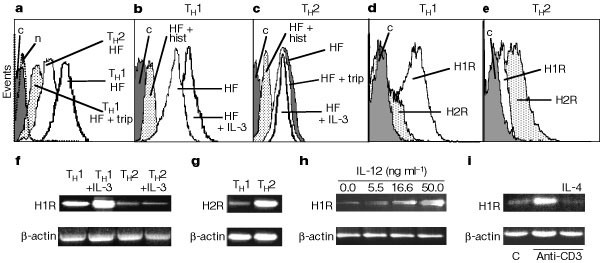
 www.nature.com
www.nature.com
A Key Regulatory Role for Histamine in Experimental Autoimmune Encephalomyelitis: Disease Exacerbation in Histidine Decarboxylase-Deficient Mice.

 www.jimmunol.org
www.jimmunol.org

Histamine regulates T-cell and antibody responses by differential expression of H1 and H2 receptors - Nature
Many pathological processes, including those causing allergies and autoimmune diseases, are associated with the presence of specialized subsets of T helper cells (TH1 and TH2) at the site of inflammation1,2,3,4. The diversity of TH1 and TH2 function is not predetermined but depends on signals...
A Key Regulatory Role for Histamine in Experimental Autoimmune Encephalomyelitis: Disease Exacerbation in Histidine Decarboxylase-Deficient Mice.

A Key Regulatory Role for Histamine in Experimental Autoimmune Encephalomyelitis: Disease Exacerbation in Histidine Decarboxylase-Deficient Mice
Histamine can modulate the cytokine network and influence Th1 and Th2 balance and Ab-isotype switching. Thus, pharmacological blockade or genetic deletion of specific histamine receptors has been shown to reduce the severity of experimental autoimmune encephalomyelitis (EAE), a prototypic...
Last edited:
Meirav
Active Member
I got stung by a bee about an hour ago. I rememebered this post
I quickly drank a bit of the nettle infusion and applied the wet leaves on the actual bite.
Maybe it would have been better to make a poultice of fresh ones (the plants near me have dried out already).
Would that be the gist of the idea? Treat like with like?
A few years ago, this happened and I had an anaphylactic attack.
So. Mast cells definitely doing better.
I'll be reading the book.
Thank you
I quickly drank a bit of the nettle infusion and applied the wet leaves on the actual bite.
Maybe it would have been better to make a poultice of fresh ones (the plants near me have dried out already).
Would that be the gist of the idea? Treat like with like?
A few years ago, this happened and I had an anaphylactic attack.
So. Mast cells definitely doing better.
I'll be reading the book.
Thank you
Issie
Well-Known Member
It is a bit like that. Not really homeopathy, because it is not that diluted. But you give enough histamine externally or internally, to not cause your own body to trigger a mast cell degranulation. (From H1R.) And when enough histamine is detected, the H2R(receptors) kick in and sort of stop the over response. It also moderates T cell function.
We need histamine, it serves an important function. We just don't want too much or the inflammation that mast cell degranulation can dump. But histamine actually helps clean up things. It is also being used for some major illnesses right now.
It's basically resetting the receptors to work properly and that helps with the autoimmune responses too.
I'll tell you the book is a hard read. But fascinating! I learned a whole lot. I had to read from front to back and not jump around. You will miss it all clicking with you, if you jump around.
We need histamine, it serves an important function. We just don't want too much or the inflammation that mast cell degranulation can dump. But histamine actually helps clean up things. It is also being used for some major illnesses right now.
It's basically resetting the receptors to work properly and that helps with the autoimmune responses too.
I'll tell you the book is a hard read. But fascinating! I learned a whole lot. I had to read from front to back and not jump around. You will miss it all clicking with you, if you jump around.
Meirav
Active Member
I usually take it in the morning. I'll try at night, see if I feel a difference. Thanks for the tip!
This last spring, during hay fever season, it was not enough. I eventually gave in to the antihistamines.
I was remembering that in traditional herbalism, fresh nettles are applied to... arthritic joints, was it? (my memory is so shot these past years...) So the stinging hairs. That maybe fits with this mechanism, of using histamine to regulate inflammatory processes.
I don't know - I haven't
really read up what H receptor and T cells are yet. Just quickly glanced.
This last spring, during hay fever season, it was not enough. I eventually gave in to the antihistamines.
I was remembering that in traditional herbalism, fresh nettles are applied to... arthritic joints, was it? (my memory is so shot these past years...) So the stinging hairs. That maybe fits with this mechanism, of using histamine to regulate inflammatory processes.
I don't know - I haven't
really read up what H receptor and T cells are yet. Just quickly glanced.
Bayard T. Horton
Member
The Clinical Use of Histamine (Bayard. T Horton, 1951).
Bayard T. Horton
Member
Demystifying Excess Immune Response in COVID-19 to Reposition an Orphan Drug for Down-Regulation of NF-κB: A Systematic Review.
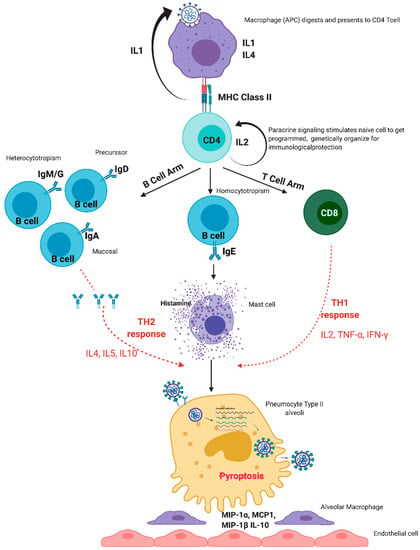
 www.mdpi.com
www.mdpi.com

Demystifying Excess Immune Response in COVID-19 to Reposition an Orphan Drug for Down-Regulation of NF-κB: A Systematic Review
The immunological findings from autopsies, biopsies, and various studies in COVID-19 patients show that the major cause of morbidity and mortality in COVID-19 is excess immune response resulting in hyper-inflammation. With the objective to review various mechanisms of excess immune response in...
Bayard T. Horton
Member
Induction of remission in chronic urticaria by immunotherapy using immunoglobulin-histamine complex (Histobulin); a case report.
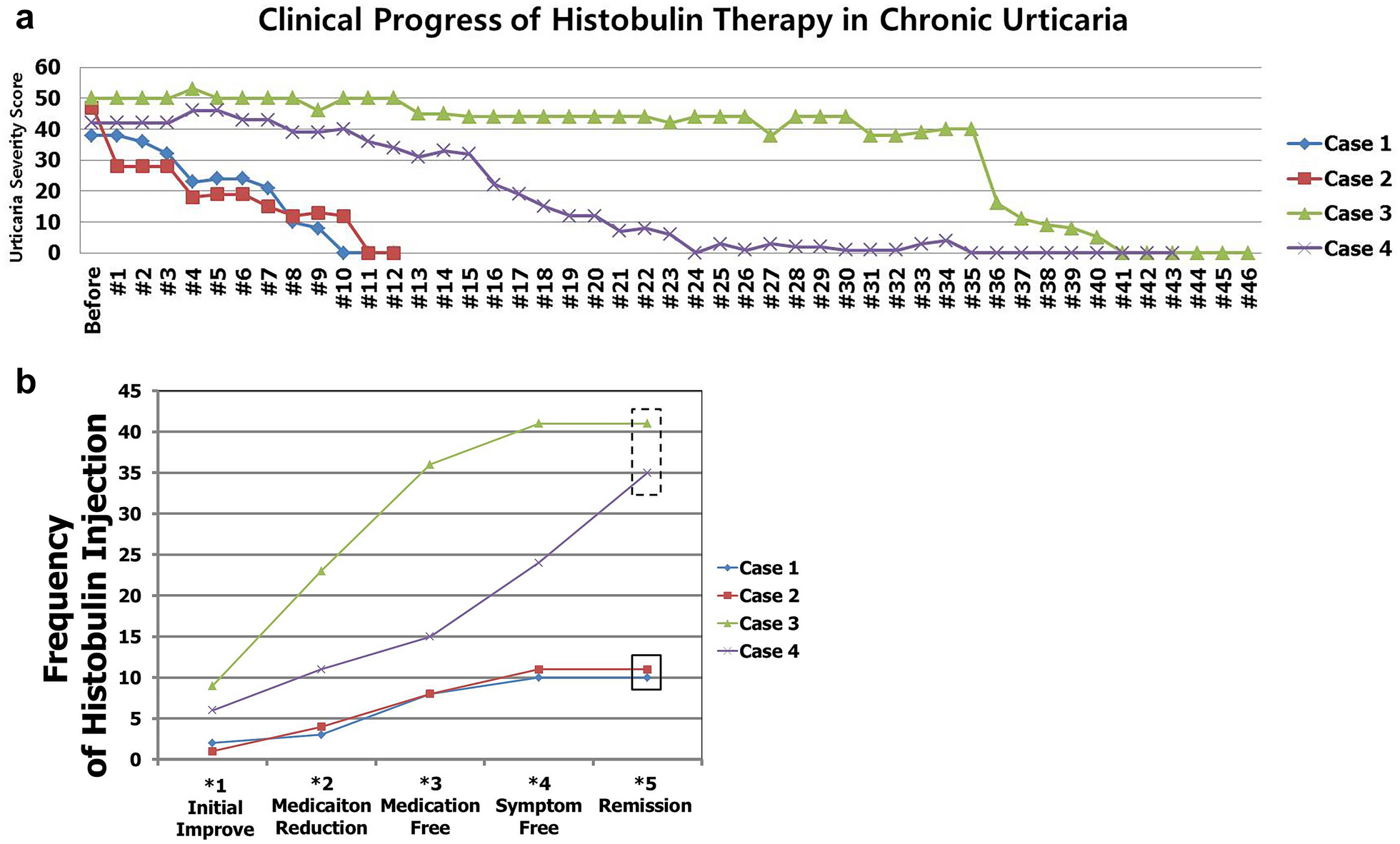
 aacijournal.biomedcentral.com
aacijournal.biomedcentral.com

Induction of remission in chronic urticaria by immunotherapy using immunoglobulin/histamine complex (Histobulin™): a case report - Allergy, Asthma & Clinical Immunology
Background Symptom control is a major concern in chronic urticaria. Histobulin™ is a histamine/immunoglobulin complex that has been approved for allergic rhinitis, bronchial asthma and chronic urticaria in some countries. Not only has the immunoglobulin/histamine complex been reported to be...
Support Our Work
HEALTH RISING IS NOT A 501 (c) 3 NON-PROFIT
Get Our Free ME/CFS and FM Blog!
New Threads
-
Support legal action of JusticeforME to address decades of Health Inequalities in the UK
- Started by Pike
- Replies: 0
-
Breakthrough: cutting out long chain fatty acids and taking Medium Chain Triglyceride oil.
- Started by Nicolaas
- Replies: 2
Forum Tips
Shopping on Amazon.com For HR
Latest Resources
-
Caitlan's 1-2 punch works with her severe ME/CFSLow dose naltrexone and neuroplasticity power Caitlan's recovery
- Cort
- Updated:
-
New idea to alleviate many complaintsExtreme improvement after respiratory therapy in young patient with ME/CFS, fibromyalgia, Long Covid
- Norbert
- Updated:
-
Drugs Get Mathew Most of the Way and Hyperbaric Oxygen Does the RestOne doctor got Mathew part of the way and another got him all th way
- Cort
- Updated:
-
-
Lucie's Surprisingly Simple Road to RecoveryYears of searching results in a simple and inexpensive pathway to recovery
- Cort
- Updated:












